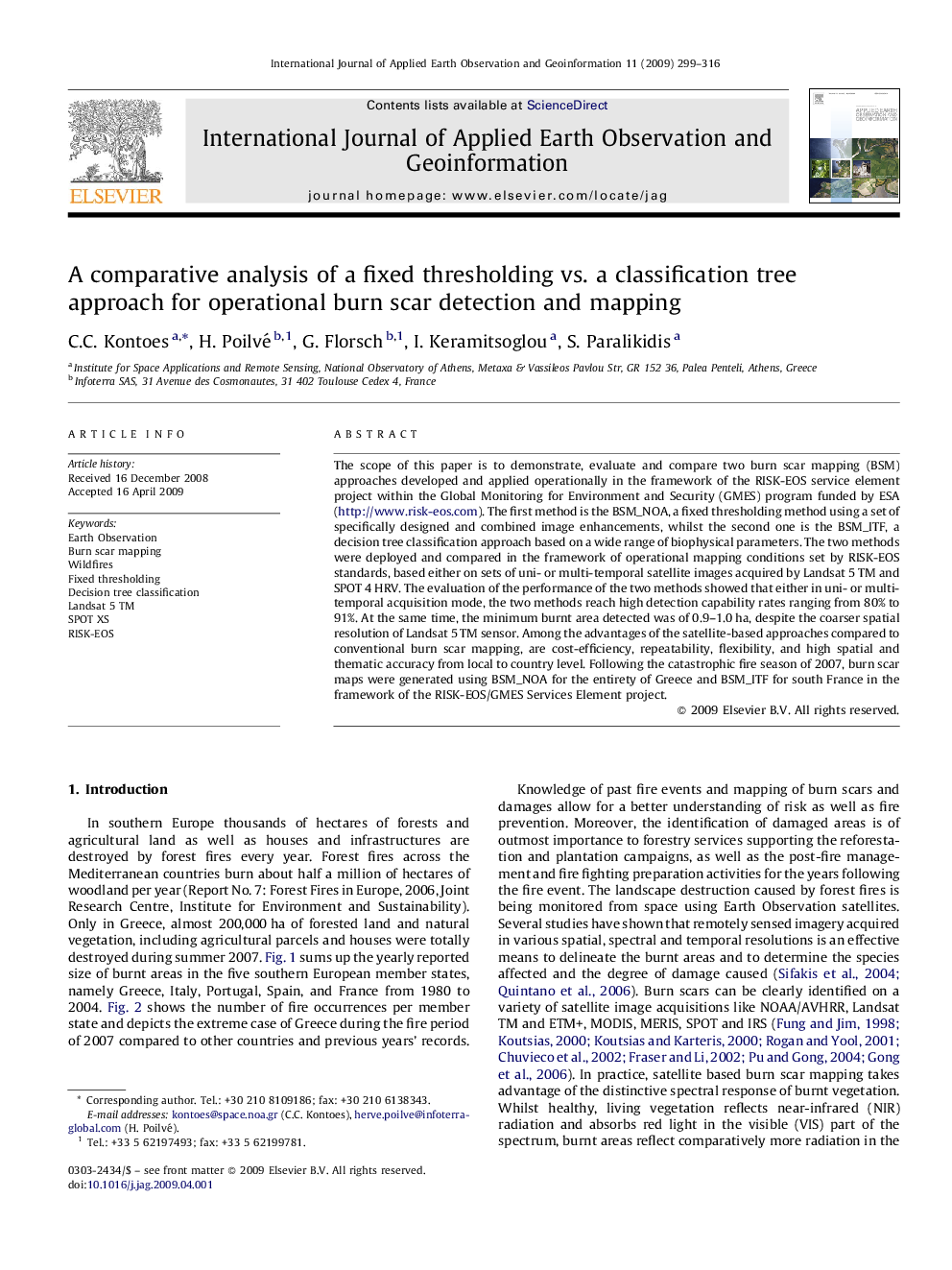| کد مقاله | کد نشریه | سال انتشار | مقاله انگلیسی | نسخه تمام متن |
|---|---|---|---|---|
| 4465216 | 1621862 | 2009 | 18 صفحه PDF | دانلود رایگان |

The scope of this paper is to demonstrate, evaluate and compare two burn scar mapping (BSM) approaches developed and applied operationally in the framework of the RISK-EOS service element project within the Global Monitoring for Environment and Security (GMES) program funded by ESA (http://www.risk-eos.com). The first method is the BSM_NOA, a fixed thresholding method using a set of specifically designed and combined image enhancements, whilst the second one is the BSM_ITF, a decision tree classification approach based on a wide range of biophysical parameters. The two methods were deployed and compared in the framework of operational mapping conditions set by RISK-EOS standards, based either on sets of uni- or multi-temporal satellite images acquired by Landsat 5 TM and SPOT 4 HRV. The evaluation of the performance of the two methods showed that either in uni- or multi-temporal acquisition mode, the two methods reach high detection capability rates ranging from 80% to 91%. At the same time, the minimum burnt area detected was of 0.9–1.0 ha, despite the coarser spatial resolution of Landsat 5 TM sensor. Among the advantages of the satellite-based approaches compared to conventional burn scar mapping, are cost-efficiency, repeatability, flexibility, and high spatial and thematic accuracy from local to country level. Following the catastrophic fire season of 2007, burn scar maps were generated using BSM_NOA for the entirety of Greece and BSM_ITF for south France in the framework of the RISK-EOS/GMES Services Element project.
Journal: International Journal of Applied Earth Observation and Geoinformation - Volume 11, Issue 5, October 2009, Pages 299–316